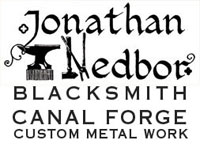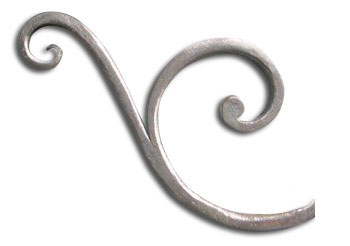

Intro to Blacksmithing
The focus of this workshop will be on a variety of techniques used in blacksmithing that can be mastered by beginners. The course will introduce students to: the History and science of forged iron, tools of the shop, fire building and tending, simple hammer welding, tapers, upsets, and the basics of hardening and tempering.
Discussions will include design and function as well as the tools of the blacksmith shop, including what to look for when buying and how to make some of your own. This is a comprehensive program that will give the participants a good working knowledge of hot forging steel as well the rare opportunity to work at the forge and anvil with instruction.
Going Dutch: An introduction to the early
Hardware found in the Colony of New Netherland
The focus of this workshop will be on a variety of techniques used in blacksmithing that can be mastered by beginners. The course will introduce students to: the History and science of forged iron, tools of the shop, fire building and tending, simple hammer welding, tapers, upsets, and the basics of hardening and tempering.
Discussions will include design and function as well as the tools of the blacksmith shop, including what to look for when buying and how to make some of your own. This is a comprehensive program that will give the participants a good working knowledge of hot forging steel as well the rare opportunity to work at the forge and anvil with instruction.
Handle It: Door Handles
This class will focus on Door Handles, using traditional forged iron door handle designs as a starting point.
The styles of historic door handles found in the US vary by region, due in most part to the country of origin of each region's inhabitants. In this class we will look at a number of door handle designs found in the Northeast US, showing Dutch, German, French and English influences.
Starting with a simple Dutch style handle, we will then move on to several designs found in and around the Hudson Valley of NY showing these varied influences. We will also cover the inner groupings (latch bar, staple and keeper) for these handle styles. Some of the skills we will refine are: shouldering, preshaping and spreading forms, punching, drifting, hammer welding, nail making. We will also discuss the considerations when working with "wrought iron," as compared to steel.
Students are invited to bring any door handles they have found, new or old, for discussion.
This class is best for people with some forging experience who can find their way around the anvil and forge.
Making Tongs - Get a Grip!
Tongs, the most basic of tools, are used to hold your work while forging. Why buy tongs when, with a little practice, you can make your own.
In this class we will make four basic types of tongs, starting with "flat jaw" tongs, the basic design for holding flat, square and round stock. With what is learned making the "flat jaw" tongs we can then move onto making "box" tongs for holding rectangular stock. From there we progress to "Poz" tongs, one of the most useful tongs to have at the forge. And lastly we will make a pair of "bolt eye" tongs for holding larger square and round stock.
The skills we will work on while making tongs include: shouldering, hammer welding, punching, riveting, as well as hand and power hammer forging.
This class is recommended for beginners with some forging experience to intermediate smiths.
School Programs
Using a diverse collection of historic ironwork to illustrate the uses for ironwork in Colonial American life, students see the importance of the blacksmith in all aspects of daily life. I bring several large boxes brimming with tools for cooking, domestic chores, craft and trade work, animal management, farming and entertainment.
Seeing these objects up close the students feel a connection to the past and a sense of how daily chores and work were performed. The students learn that without the blacksmith we would all still be living in the "Stone Age"!
I also bring along iron in various natural forms and provide some background into where metal comes from.
I have done these talks for all age groups, for students in the 2nd grade on up.
Blacksmith demo site needs
I bring a complete working set up for demonstrating the work and processes of blacksmithing. My demo does not require very much preparation on site A shaded spot with protection from breezes makes for a good work environment. Sunlight makes it difficult to see the fire and the glowing heat of the iron so shade is essential. Under a tree is ok, a shed or pavilion is better.
A wind break of some sort to keep the smoke and dust out of my face is also helpful. It could be along the side of a building or a hedge, etc.
Because I am using fire in my work, a tent is not a good idea for my work area. I could work just outside the edge of the tent and have my display area in the tent. Because my work creates dust and smoke it is best to site my demo a little distance from the other displays.
If a minimum of 2 long tables can be provided on site that would provide enough room to spread out my collection of historic iron objects as well as display my forged work.
